Published Oct 13, 2020
5 of the Best Star Trek Comics Moments
As told by the writers themselves!
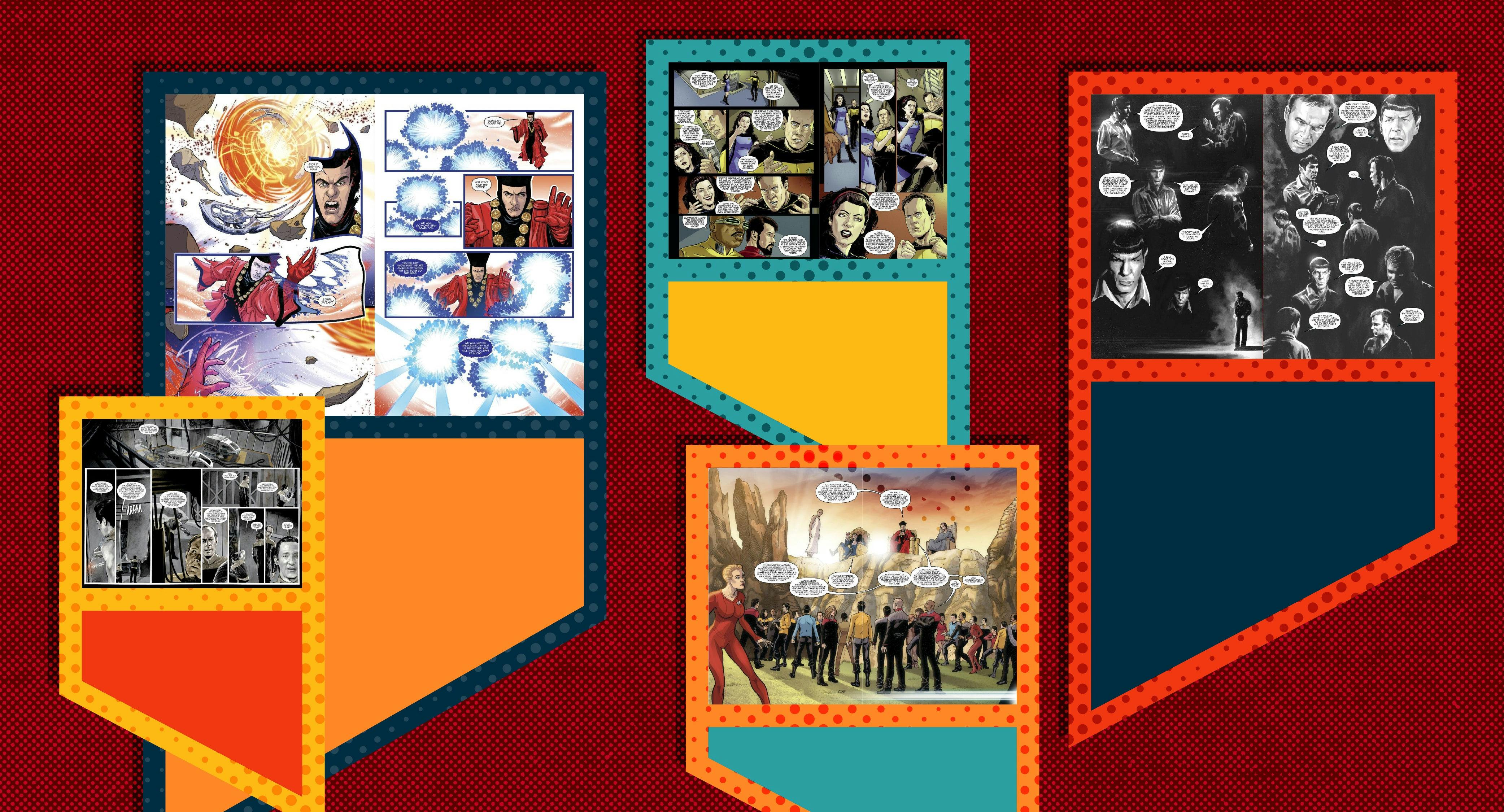
StarTrek.com
We’ve been very fortunate in our time writing Star Trek comics to work with some of the best pencilers, inkers, painters and colorists in the industry. Comics are at their best when they’re a true collaboration, and we’re happy to say that’s been the case in our books. We try to write to accentuate the strengths of our illustrators, and without fail they come back with pages that exceed our expectations. Here are five of our favorite moments from some of our recent books:
Star Trek: Mirror Broken #2, Pages 12-13
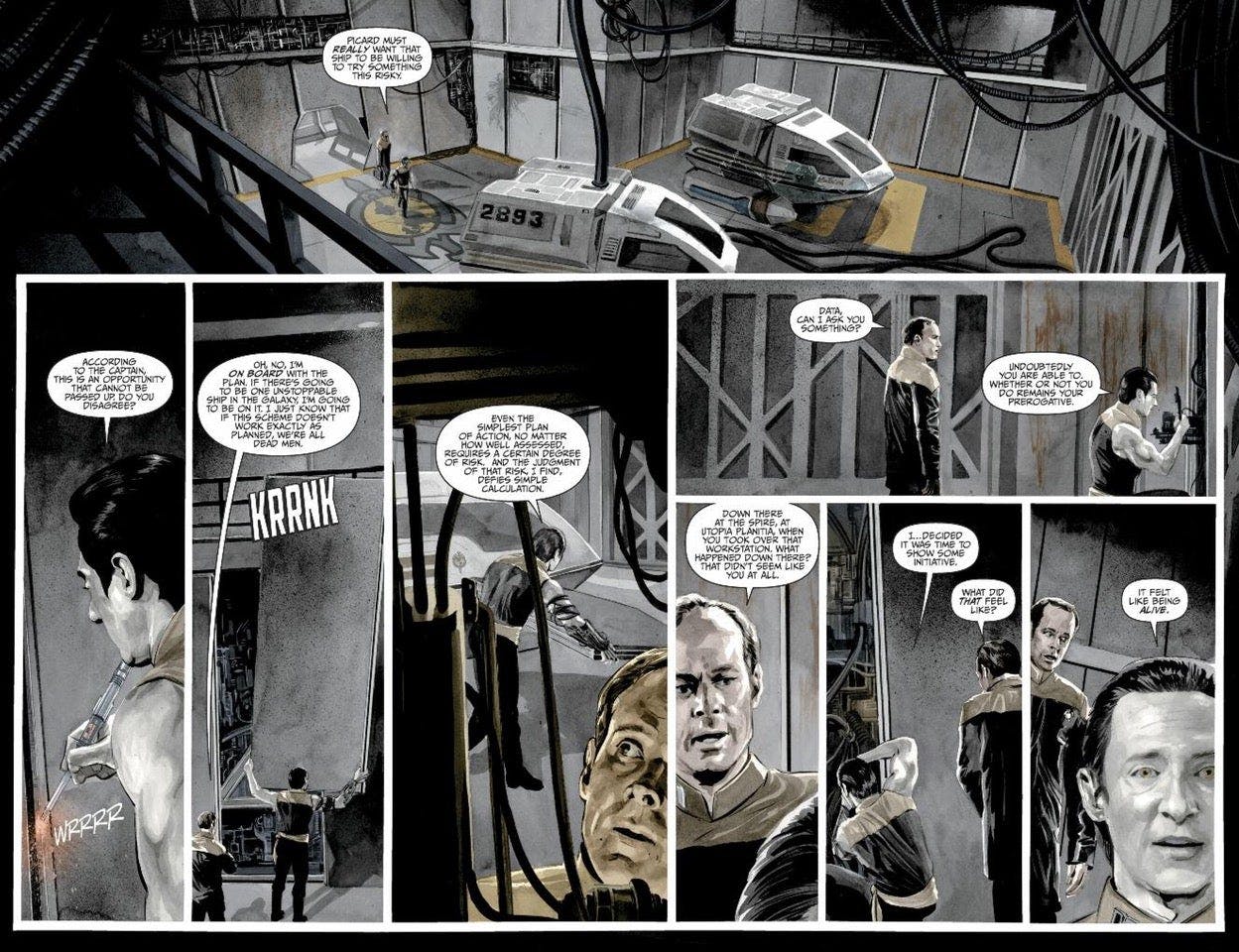
StarTrek.com
Scott Tipton: One of the best things about writing characters you love is that sometimes they take directions you don’t expect. When we introduced the Mirror version of Reg Barclay into our series, we thought it would be little more than a glorified cameo, and instead he wound up as a lead character, and his friendship with Mirror Data is a highlight of the series for me. The last panel here is one of those moments I’m proudest of, where it really felt like we captured an emotional beat worthy of the source material. It was always important to us to show that these characters aren’t opposites – they’re the same characters, just altered by being raised in a completely different environment. This cold, ruthless version of Data would still long for humanity, and find himself surprised by it. And the moment only works thanks to the brilliant art by J.K. Woodward, who captures Brent Spiner perfectly in the final panel.
David Tipton: In the Mirror Data storyline, Data starts out as something a little closer to an automaton. But with the encouragement of Mirror Picard, and through his friendship with Mirror Barclay, Mirror Data evolves into an independent and autonomous being who is at times surprisingly unpredictable. In these panels from J.K. Woodward, I love the casual way Mirror Data moves around massive wall panels, and especially that look of wonder on his face at the very end as he tells Mirror Barclay what it was like when he first started making decisions for himself.
City on the Edge of Forever Issue 4, pages 5-8
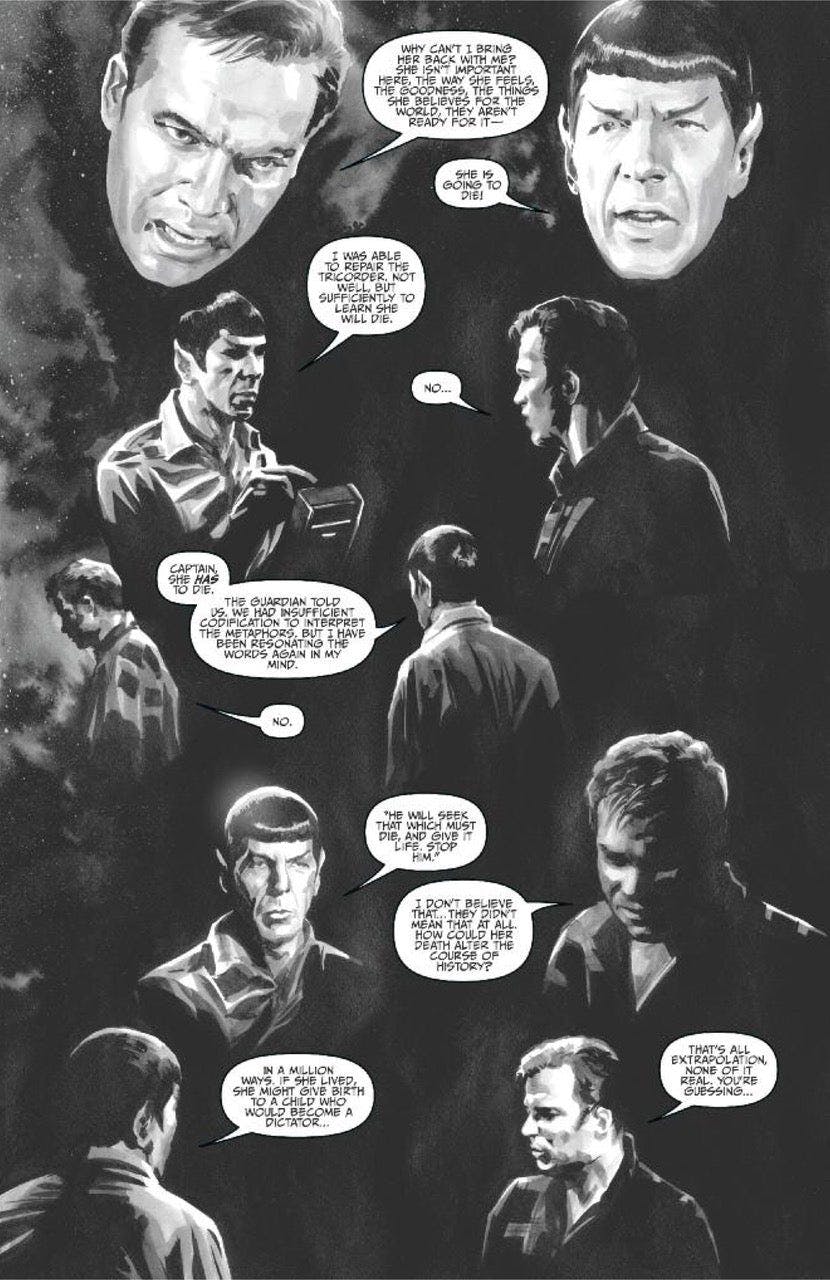
StarTrek.com
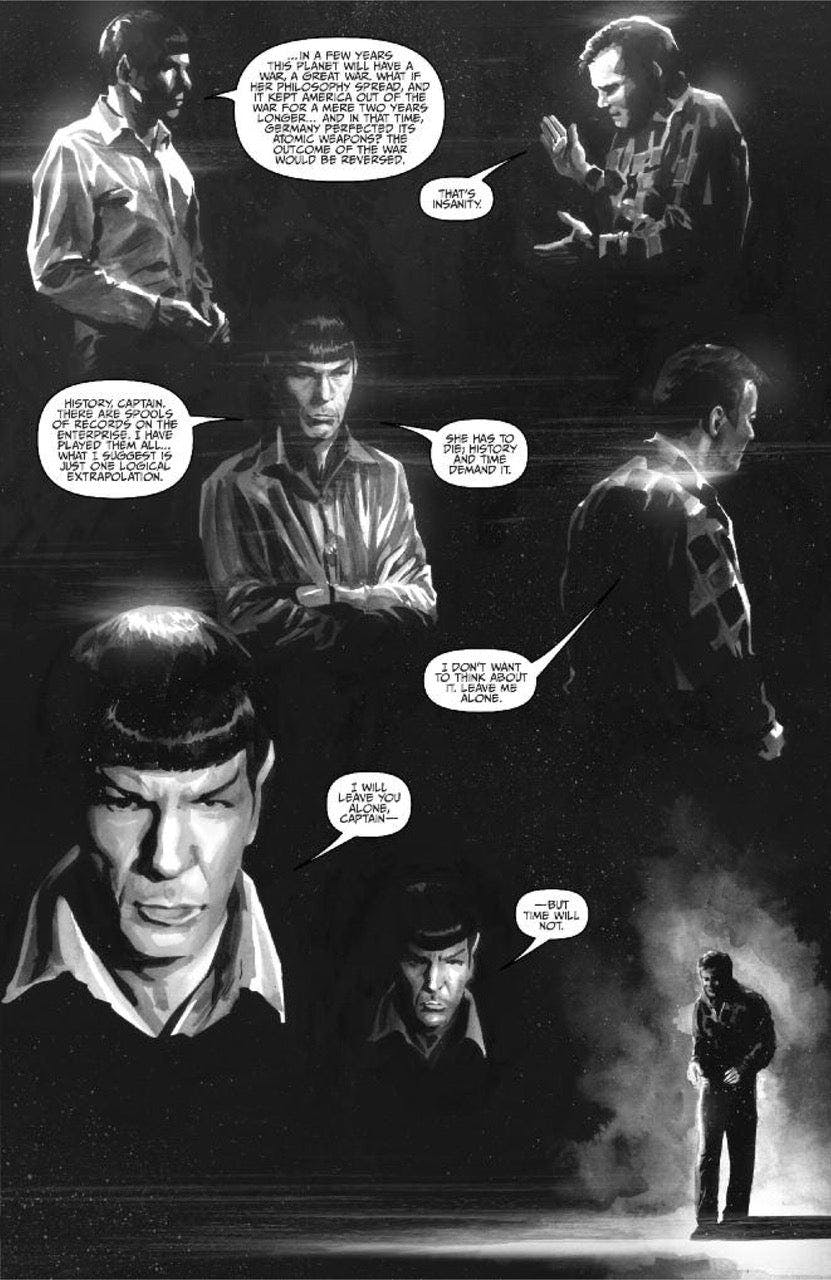
StarTrek.com
DT: In Harlan Ellison’s original teleplay, there’s an extended conversation between Kirk and Spock about Edith Keeler’s place in history, and what Kirk must be prepared to do to restore the original timeline. To adapt this sequence for the illustrated page, we worked with J.K. Woodward to create a dramatic montage that conveys Spock’s determination to do what is absolutely necessary and Kirk’s agony at confronting her fate and dread at the hard decisions he will have to make.
ST: It’s a tall order to make a 4 page back-and-forth visually compelling, and yet that’s exactly what J.K. has done here. That final pull-back in the last panel, with Spock’s ominous last line followed by the solitary figure of Kirk…man, it gets me every time.
Star Trek: The Q Conflict #4, Pages 18-20
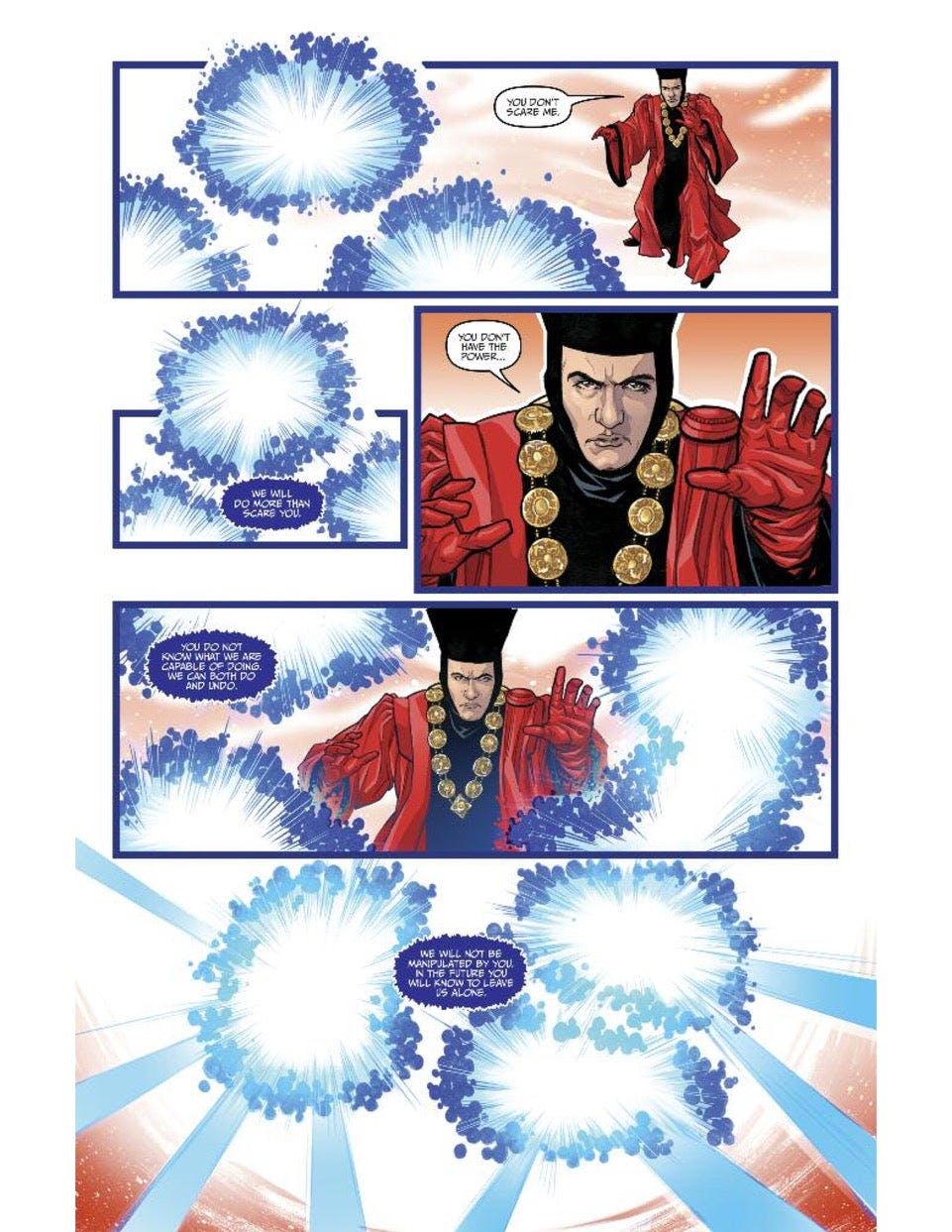
StarTrek.com
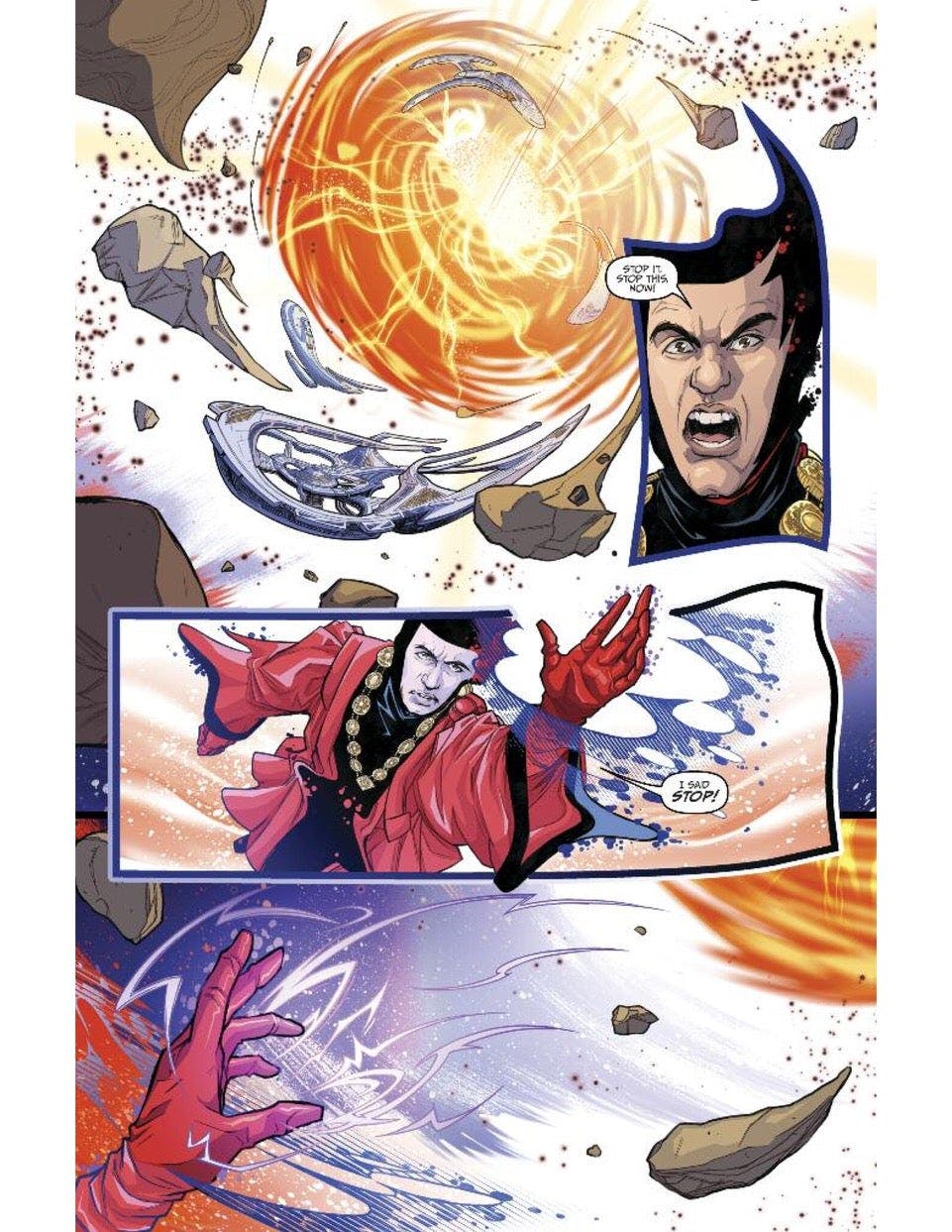
StarTrek.com
DT: In issue 4 of The Q Conflict, Q has provoked a fight with the Prophets from Deep Space Nine. Typical Q: he’s overconfident going into this confrontation, and the results rapidly turn out to be unexpected and out of Q’s control. Up until now in the story, the various godlike beings had been remarkably measured in the use of their abilities, but suddenly it became much more obvious how powerful the forces in play were here, and that behind the scenes of Q’s games were extraordinary dangerous stakes. Artist Silvia Califano, inker Elisabetta D’Amico, and colorist Alessandra Alexakis did fantastic work here illustrating how Q goes from confidence to concern and then horror as the Prophets turn time and space against him.
ST: It’s the little things that sell the entire concept: as Q and the Prophets battle and warp the very nature of reality, even the frames of the panels buckle and give way. A wonderful bit of visual communication that came from the minds of the artists.
Through the Mirror #4, pages 6-8
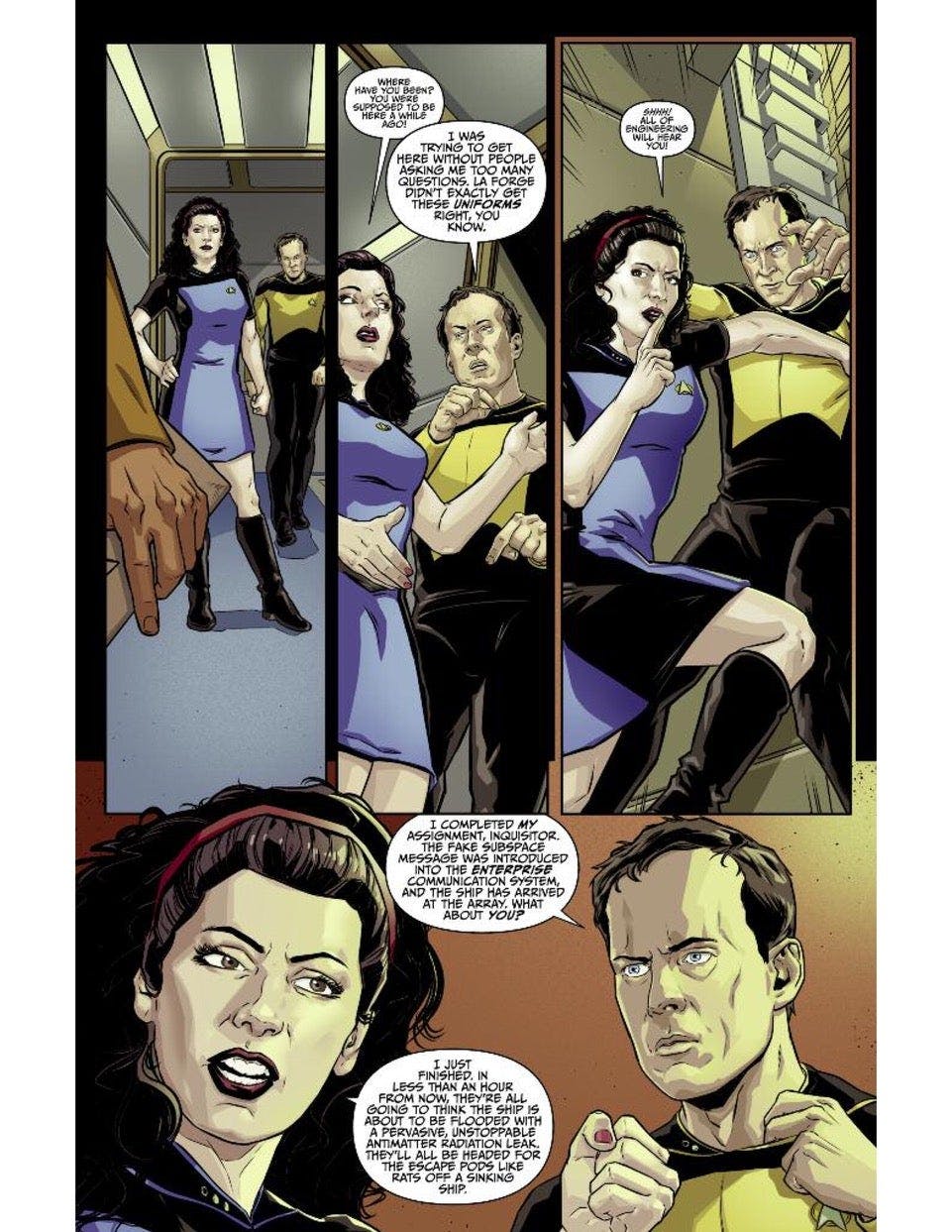
StarTrek.com
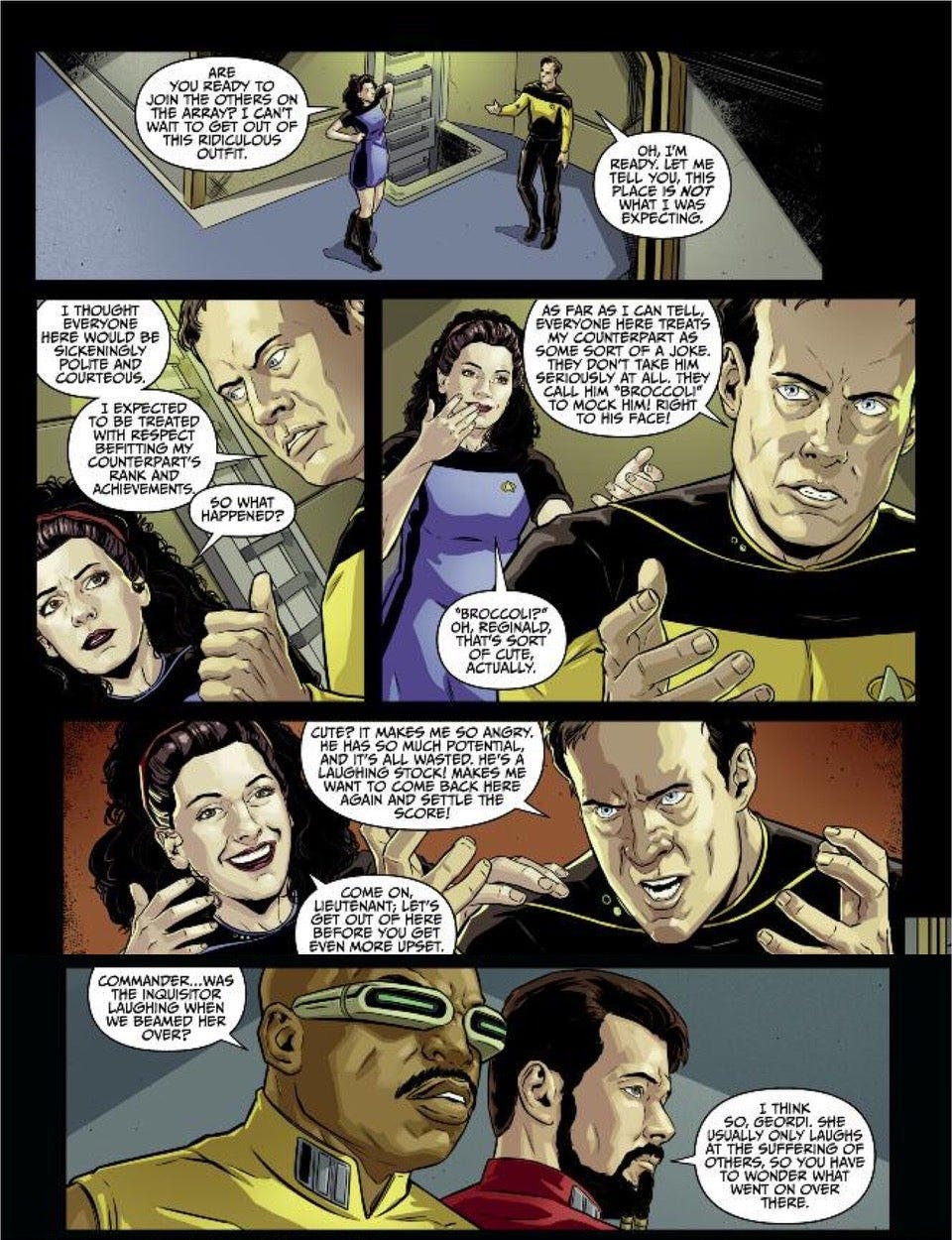
StarTrek.com
DT: In Through the Mirror #4, Mirror Troi and Mirror Barclay have infiltrated the Prime Universe Enterprise. While their mission is successful (despite some anachronistic uniforms), all doesn’t go entirely well: Mirror Barclay is outraged to discover that his counterpart in the Prime Universe is an object of scorn and mockery. Artist Carlos Nieto and colorist Fran Gambos capture the characters of Mirror Troi and Mirror Barclay especially well here. I love the expressions on Mirror Troi’s face as she sees Mirror Barclay get angrier and angrier.
ST: Carlos did a wonderful job capturing Marina Sirtis’ likeness, especially when we’re asking him to do a lot of different things at once: she’s Mirror Troi, but she’s sometimes trying to act like her Prime-Universe counterpart, and she’s never confident in the uniform, which you can see in her body language.
Star Trek: The Q Conflict #1, Pages 18-19
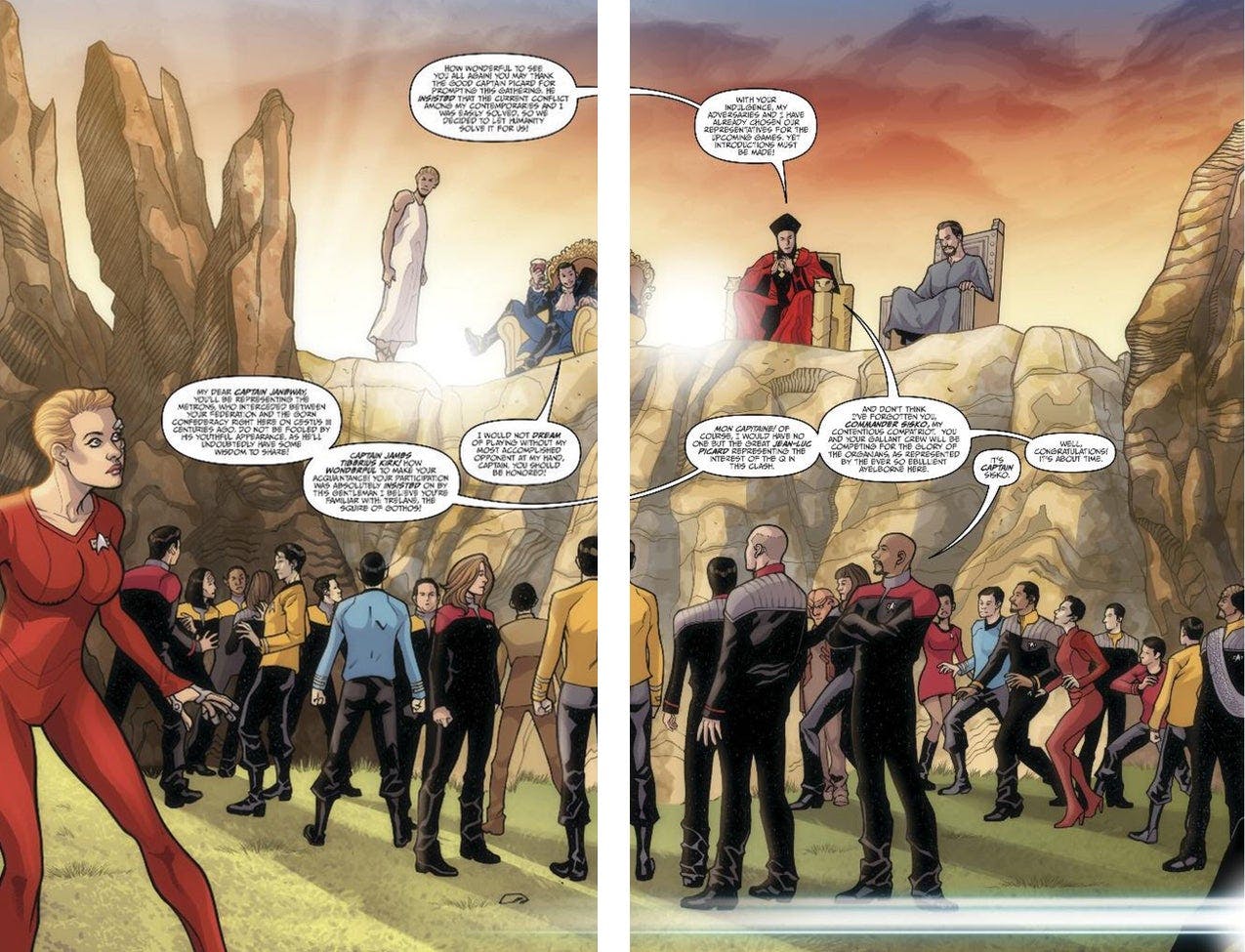
StarTrek.com
ST: We knew we were asking a lot of our artist David Messina with this double-page spread, but this moment was important. This was our big reveal of the Big Bads of our series, four of the most powerful godlike aliens from Trek, and we also wanted to show all four crews together for the first time anywhere, but still have the moment feel real. All thirty or so characters had to be not just standing, but reacting to what’s going on, and all that has to be expressed via body language. Messina pulled it off wonderfully.
DT: Here are a few examples of what Scott’s talking about here with Messina’s use of body language. Notice how Spock is tense and looking upward, shoulders hunched. Trelane is whimsical, with his leg thrown playfully over the arm of his chair, with the same sort of attitude and enthusiasm he showed at the beginning of “The Squire of Gothos.” Q is plotting, hands folded in front of him, confidently planning his contest of champions. And poor Ayelbourne, there on the right: you can tell he does not want to be there at all.

